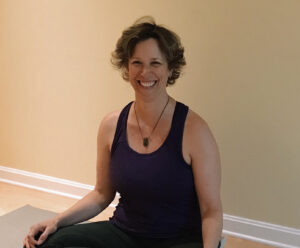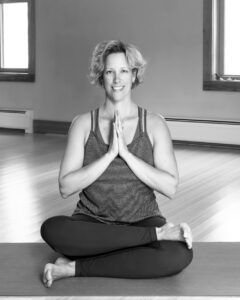image courtesy of Unsplash.com
I was guiding a small TRE® & Yoga practice group through my Calm Scale when one participant described their experience as “Wired & Tired!” We all nodded in recognition of this wonderful description of our own embodied experiences.
The Calm Scale is a guide I designed to help you learn how to read your nervous system and identify self regulating resources. (You can experience this for FREE here: https://maitrisomatics.com/the-calm-scale/). In this experience you are asked to identify a number, sometimes two, that tells you where you are in any given moment. This practice creates a container for feeling safe in your body and offers you the capacity to respond to life’s challenges rather than get carried away in your well worn patterns of reaction.
When you grow your capacity to be responsive versus reactive you experience:
-
-
-
-
- less anxiety
- less emotional turmoil
- more breathing room
- more clarity and understanding of the situation
- more choice
- and less suffering!
-
-
-
I’ll admit the scale can be a little off putting. We are complex beings and this is a simplified process for identifying our complex experience. However, time and again, even my most resistant clients eventually open to this tool and recognize more and more nuance to their experience, with great benefits. One client recently shared with me,
“Your Calm Scale practice has been fully ingrained into my life as a common, daily, check in. I feel like I have my life back in a way that I haven’t felt in years. I can’t thank you enough.”
I would consider being both “Wired & Tired” a complex internal experience.
This is an excellent description of being in two (2) nervous system states simultaneously, which is of course possible, and common, as complex human beings. “Wired” would be an example of sensations that signify sympathetic arousal. The body’s stress response is activated. This part of us is responsible for “fight and flight” as well as “excitement and play.” It is a lot of energy, and in combination with “tired,” it doesn’t have anywhere to go and may feel a bit stuck. On the Calm Scale, we might fall somewhere between 0-5.
The “tired” part is when the parasympathetic nervous system is activated, think rest and digest, recovery, sleep, and as a protective defensive strategy of the stress response that moves us towards freeze or dissociate. On the Calm Scale we are moving beyond a ten (10), where we can quickly move into numb, fatigued, sleepy, spacey, or not really sure how we are feeling.
“Wired & Tired” is a hallmark combination of sensations and complex nervous system states associated with anxiety. We feel over stimulated and the body is drained of energy. If we spend a lot of time here, in this state, it can become stuck and more challenging to resolve.
How do you know if you are “Wired & Tired?” You may:
-
-
-
- feel a lot of buzzing or electrical energy in your chest and head but the rest of your body is heavy and fatigued.
- fall asleep only to be jolted awake again, and maybe again and again.
- have a hard time settling.
- go, go, go and then crash, which could be restless sleep, binge watching Netflix, spacing out, or eating when you are not hungry but seeking energy.
- feel extremely tired but unable to sleep.
- have lots of nervous energy but can’t rest or deeply relax.
-
-
So what is a person to do?
Self Regulation: Learn how to read your nervous system and identify your “in the moment” resources that help you change your state with the Calm Scale.
Build Routine: Your body has internal clocks and patterns and when we honor those, we feel better. One example is developing good sleep hygiene: go to bed at get up at the same times each day; develop a sleep routine; try not to nap during the day. Restore your energy with a short Yoga Nidra or NSDR (non sleep deep rest) practice instead.
Exercise: nothing too intense if you are feeling wired and tired most of the time. Mindful movement like yoga or tai chi, gentle walks or swims, spend time in nature. [I offer trauma informed personal training services if you’d like to use weight lifting, self massage and other fitness based movement practices for easing anxiety].
Community & Relationship: Spend more time with other settled nervous systems. Our nervous system is more responsive to and learns more quickly from other nervous systems. So spend time with friends, family, and groups that are soothing and settling for you.
Anytime there is persistent or intense anxiety I always recommend slowing down.
Try moving in slow motion. Do only one thing at a time, putting as much of your attention on that one thing as possible. Invite your breath to be long, slow, and smooth. And as you take in the multiple resources and suggestions I offer in this note, pick just one (1) for now. The one that feels the most nourishing and accessible to you.
May you be happy. May you be healthy. May you both be and feel safe. May you live your life with ease and peace!
warmly,
joann
If you would like to receive these notes in your inbox with exercises and practices sign up for my newsletter here!
Remember: this post is for informational purposes only and may not be the best fit for you and your personal situation. It shall not be construed as medical advice. The information and education provided here is not intended or implied to supplement or replace professional medical treatment, advice, and/or diagnosis. Always check with your own physician or medical professional before trying or implementing any information read here.
Private Yoga ~ Personal Training ~ Movement Coaching ~ TRE® Tension & Trauma Release Exercise





